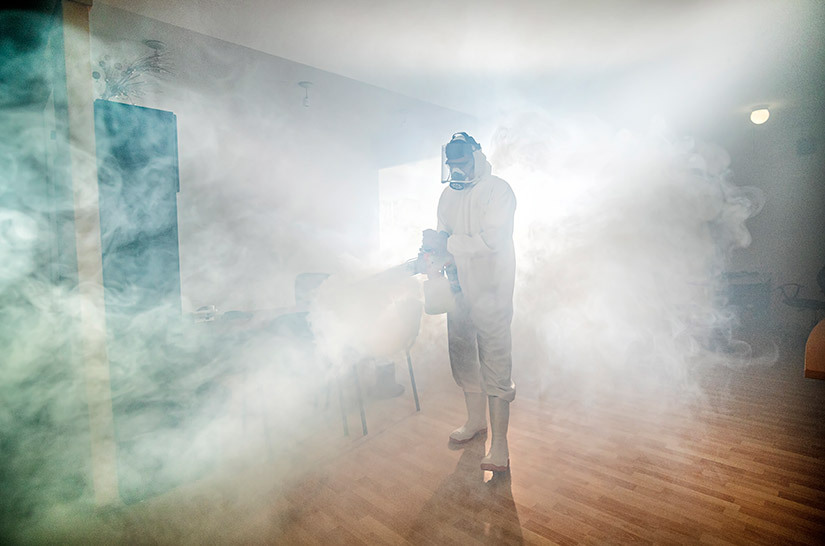Part 5 in our blog series about COVID-19 as a forcing function in the workplace: How it’s leading to progress whether we’re ready for it or not
Employees and their safety are unquestionably a core value for organizations. COVID-19 challenged leaders in wholly new ways. For employees who were deemed essential, how to protect them from a novel, potentially deadly and highly contagious virus while continuing to run the business. For those who were non-essential or could work from home, how help them adjust in a meaningful way. For all employees, how to ease the emotional toil from all the new stresses that came with the pandemic.
I reached out to 20 or so leaders from organizations of all shapes and sizes, spanning multiple industries in the public, private and academic sectors, to gain insights about the impact COVID-19 was having on their business and their industry. Employee safety, both emotionally and physically, was at the top of everyone’s mind.
Predicting the onset of COVID was near impossible and in the world of imperfect adaptation here is what we learned about the mental and physical well-being of employees.
Disaster recovery
Those organizations with some element of a disaster recovery plan or process orientation seemed to land on solid ground. They had the ability to quickly organize, assess and address key issues, and revisit solutions for continuous improvement.
Physical and environmental health
These are the very tangible elements of safety that made it to the front of the line, so to speak. New safety protocols were being built on the fly and updated based on CDC recommendations. As a side note, some companies in the environmental or air handling-type industries expected to come out stronger due to increase demand for services and equipment.
Emotional well-being
There was a theoretical or cognitive understanding of the emotional elements of COVID on employees including strains of work from home, caring for family members, a loss of daily in-person interaction, etc. However, as time has passed there is now likely a more heartfelt understanding. In anticipation of a “new normal” leaders were more intentionally interjecting “connection” by hosting virtual coffee or happy hours and wear your favorite team gear day for video conferences.
Liability
Organizations were working on providing best physical safety in work from home, and in anticipation of return to work (in the building). Again, following CDC recommendations was integral to all return to work plans. Lurking in the background were concerns about liability related to customer and employee safety.
Productivity
This was a key theme across interviews and while this could be tucked into emotional health, doing so would minimize the power behind statements like “people need to feel productive.” Simply put, leaders worked hard to give employees a sense of contributing and making a difference. Employees were more than willing to roll up their sleeves and work on something that was not in their normal routine of things. Taking action likely provided people some sense of control during a time of chaos and unknowns back in March 2020.
Leadership coaching tips
- Encouragement: Now more than ever be clear about wins along the way. Meaning, most managers wait until the end of a project to say “way to go!” Celebrate the steps along the way (even setbacks) as progress toward our goals.
- Meeting prep: Use a pre-meeting agenda to gather thoughts and questions from your more introverted participants. One executive we interviewed focused specifically on this and felt she/he was getting richer meeting discussions and solutions as a result.
- Energize others: Consider how to energize your extroverts who tend to gather energy and momentum by being with others which is probably different in the WFH setting.
Series summary and conclusion
Back in March I completed interviews with senior leaders to better understand the impact COVID-19 was having on their business ecosystem.
The pandemic became a forcing function often for the positives such as technology adoption and increased focus on safety (environmental, mental/physical well-being). There were also many unintended consequences both positive and negative; a refined focus on a company’s core business and loss of informal feedback and quick hallway chats to drive projects forward respectively. I saw a shift in “how we see our employees,” from compartmentalizing (work v. home) to more wholistic. There was the obvious battle on cashflow to keep businesses afloat in order to care for employees. A more nuanced insight was the need for employees to feel productive and contribute – there was a keen desire to “take action” even when the face of the business or their roles had radically shifted. The value of communication was palpable and recognized as a divining rod to inform, align and motivate employees even when there was no apparent finish line in sight.
COVID-19 has thrust companies, people and families into unchartered waters. We’ve learned and grown a lot, as well we’ve suffered setbacks and still have more to understand. What was evident across all organizations is that leaders are now fighting for the viability of the business and that existential battle is vastly different from profitable growth.
This is part five in a five-part blog series. Check out my previous blogs about leadership, financial performance and technology.

